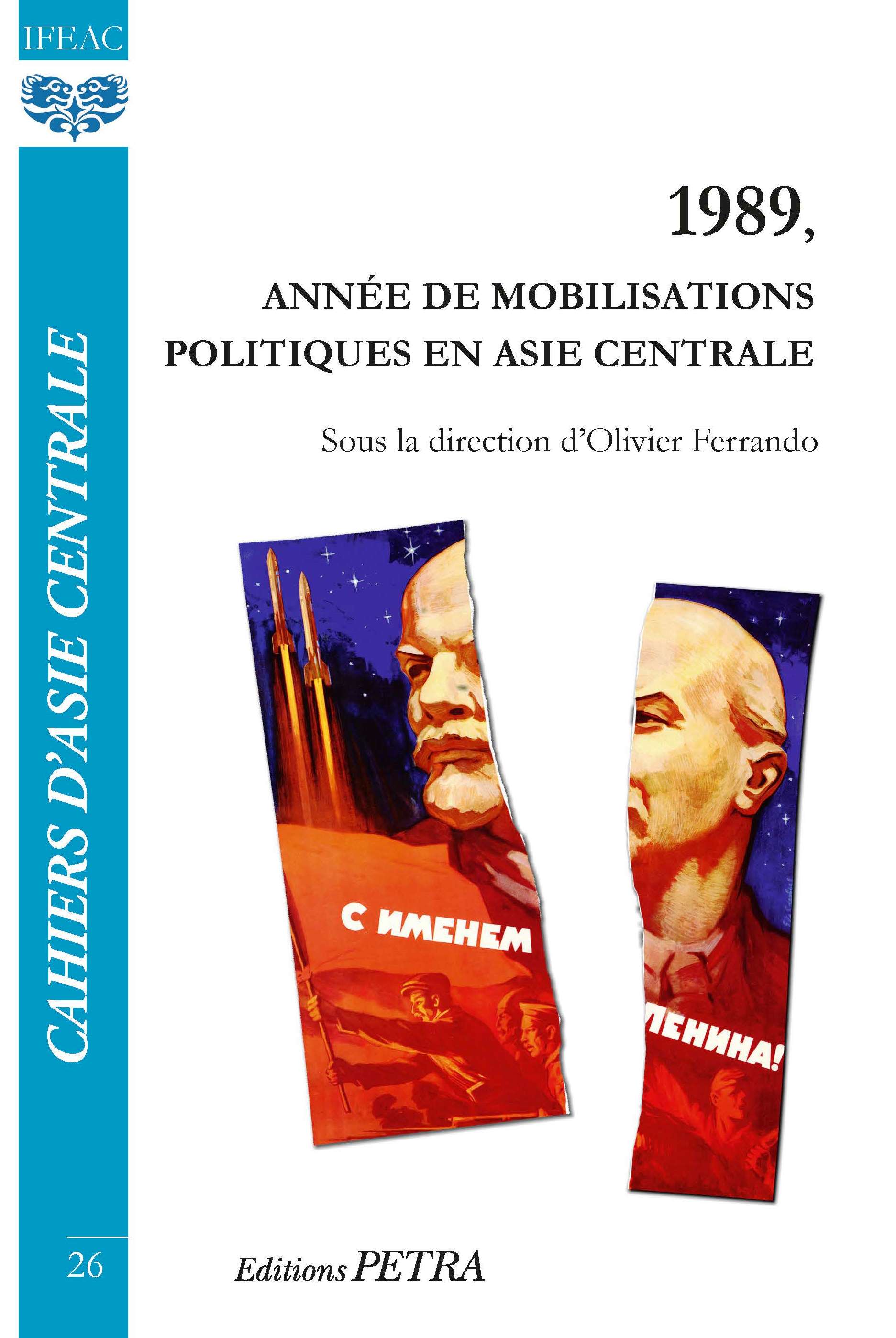-
30.00€
See below the English abstract
L'année 1989 symbolise, dans la mémoire collective, la fin du communisme en
Europe, mais il faudra attendre plus de deux ans pour assister à la dissolution de
l’Union soviétique et à l’accès des cinq républiques d’Asie centrale à leur indépendance.
Pourtant, dès le début de l’année 1989, avant-même la chute du mur de Berlin, la
région fut le siège de plusieurs signes avant-coureurs : le retrait de l’Armée Rouge en
Afghanistan ; l’arrêt des essais nucléaires soviétiques au Kazakhstan ; l’apparition des
premières tensions interethniques dans la vallée du Ferghana ; l’adoption par chaque
réStructurepublique d’une loi sur la langue. Autant de moments qui montrent combien l’année
1989 a marqué l’histoire récente de l’Asie centrale.
Ce nouveau numéro des Cahiers d’Asie centrale est donc consacré à l’étude des
transformations sociales et politiques survenues au cours de l’année 1989 afin de
comprendre à quel point cette année constitue un moment fondateur des mobilisations
politiques en Asie centrale. Couvrant un large spectre disciplinaire (histoire,
anthropologie, sociologie, science politique), ce numéro est composé de dix articles
écrits à parité égale par des auteurs centrasiatiques et occidentaux, apportant ainsi à la
fois des analyses objectives et des témoignages de terrain de chercheurs ayant vécu les
événement présentés ici.
Découpé en trois parties, l’ouvrage traite d’abord des nouvelles formes de culture et
de discours politiques qui se sont développées en Asie centrale à la fin des années
quatre-vingt à la faveur de la politique de reconstruction (perestroïka) et de transparence
(glasnost) voulue par Mikhaïl Gorbatchev. Il explore ensuite les mobilisations politiques
à l’oeuvre en Asie centrale en 1989, en réponse au mécontentement social, économique
et culturel de la population. Enfin, la dernière partie aborde le processus d’ethnicisation
de l’action collective, en revenant sur trois exemples tragiques d’escalade violente des
mobilisations politiques.
In collective memory the year 1989 symbolises the end of communism in Europe. However, it was not until 1991 that the Soviet Union disappeared and the five Central Asian republics became independent states. Yet from early 1989, even before the fall of the Berlin Wall, several early warning events took place in the region: the defeat and withdrawal of the Red Army from Afghanistan; the cessation of Soviet nuclear testing in Kazakhstan; the outbreak of the first interethnic tensions in the Ferghana Valley; the adoption by each republic of a Law on Language. Many moments that show how the events of 1989 have marked the recent history of Central Asia.
This new issue of Cahiers d’Asie centrale is dedicated to the study of the social and political transformations that took place in Central Asia in 1989, with the aim of understanding to what extent this year, which is so symbolic in world history, constitutes a founding moment of political mobilisation in Central Asia. Covering a wide disciplinary spectrum (history, anthropology, sociology, political science), this issue consists of ten articles written in equal numbers by Central Asian and Western scholars. It provides objective analyses as well as field testimonies of scholars who experienced - and, for some of them, took an active part in - the events discussed here.
Divided into three parts, the book first addresses the new forms of political culture and discourse that developed in Central Asia in the late 1980s in the context of the new policy of reconstruction (perestroika) and transparency (glasnost) initiated by Mikhail Gorbachev. The second part of the book explores the process of political mobilisation in Central Asia in 1989, in response to the social, economic and cultural discontent of the population. The third and last part proceeds from this logic of ethnicisation of collective actions, through a review of three tragic examples of violent escalation of political mobilisations.
Transcriptions, translittération et autres conventions
Introduction
Olivier Ferrando
Perestroïka et glasnost : les nouvelles formes de culture et de discours politiques à la fin des années quatre-vingt en Asie centrale
Turkmenistan at the Last Stage of Perestroika. Determinants of an Authoritarian Path
Slavomir Horak
L’année 1989 : politique mémorielle et recherche scientifique sur les répressions politiques au Kazakhstan
Arajlym Musagalieva et Ulbolsyn Sandybaeva
“And Our Words Must be Constructive!” On the Discordances of Glasnost’ in the Central Asian Press at a Time of Conflict
Madeleine Reeves
Un mécontentement social, économique et culturel à l'origine des mobilisations politiques
Tajikistan and the Ambiguous Impact of the Soviet-Afghan War. The Political Mobilisation of Former Participants of the Soviet-Afghan War in 1989
Markus Goransson
From February to February and From Ru ba Ru to Rastokhez: Political Mobilisation in Late Soviet Tajikistan (1989-1990)
Isaac Scarborough
L’accaparement des terres comme forme de révolution sociale. Le cas du Kirghizstan en 1989
Ajdarbek Kockunov
L’ethnicisation des mobilisations collectives en Asie centrale depuis 1989
Olivier Ferrando
Un mécontentement social, économique et culturel à l’origine des mobilisations politiques
Novy Uzen Riots in 1989: Ethnic Conflict or Economic Nationalism?
Gulnara dadabayeva & Dina sHaripova
February 1990 Riots in Tajikistan. Who Was Behind the Scenes? Review of the Main Existing Versions
Parviz Mullojanov
Une historiographie du conflit de 1990 dans le sud du Kirghizstan
Zajraš galieva
Résumés
